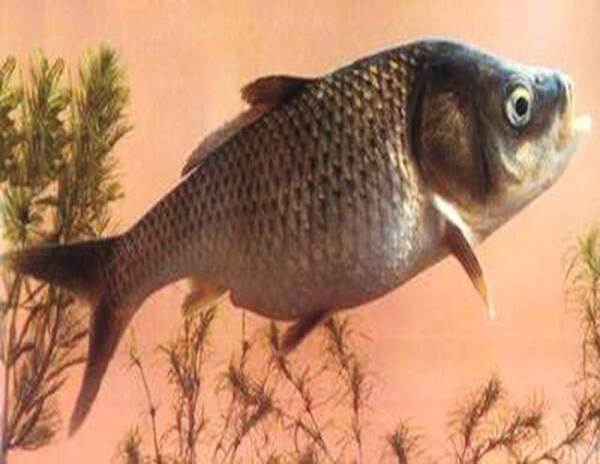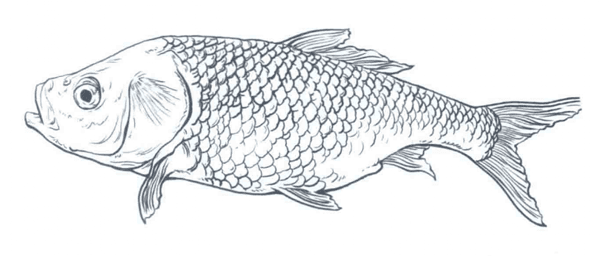The Latin name of big-headed carp is Cyprinus pellegrini, which belongs to the Cyprinidae family and the Cyprinidae genus.

China's rivers and streams have historically been rich in "big-headed carp", but there is no definite research material on when it originated. However, according to a large number of cultural relics unearthed in Jiangchuan, humans picked plants or caught fish on the shores of Xingyun Lake as early as the "New Man" era (about 20,000 to 30,000 years ago). Stone tools and pottery fragments in unearthed cultural relics prove that humans worked, lived and reproduced on the shores of Xingyun Lake in the Neolithic Age (about 4,000 years ago). There was a record during the Zhengde period of the Ming Dynasty (1506-1520): "Its fishing profit is famous in central Yunnan." The records of the Qing Dynasty and the Republic of China period are "Luyu", which is produced in Xingyun Lake. It is similar to carp but has a huge head, a fat body and delicious taste. It is commonly called "bighead fish". Its brain has higher nutritional value. It produces 35,000-40,000 kilograms per year and is sold in Yuxi, Lixian and other places. In the sixth year of the Republic of China (1917), the output of bighead carp in Xingyun Lake has been declining year by year. In the first thirty years, the mesh size was large and the fish was also large. Now there are dense mesh nets to catch day and night, but the fish are very weak, and the annual output is about 1,500 kilograms. According to statistics from the Ministry of Industry in 1935, "the fish production of Xingyun Lake (Jiangchuan County) is about 100 dan of bighead carp". In 1948, the sales volume of bighead carp in the streets, fishing villages and other markets was still quite large.
Bighead carp prefers the middle and upper layers of water bodies with relatively clear water quality. It has poor tolerance to harsh environments and is prone to death if the water quality is turbid or it leaves the water body. It is sexually active and swims quickly. It mainly feeds on zooplankton such as cladocerans and copepods, and also feeds on rotifers and diatoms. Its diet is single, and there is little difference in diet between large and small individuals.
Usually, 50% of the bighead carp are sexually mature in one-year-old fish, weighing 52 grams, while the male body length is only 117 mm and weighs 32 grams. Bighead carp lay eggs in batches, usually in two batches, with a 7-day interval between the two batches. Each batch lays eggs for 3 days, and the second batch of eggs is laid 7 days later. The spawning period is relatively long, starting from early April to September, with most spawning in May and June. The eggs are usually laid at 3-5 o'clock in the morning on a sunny day, 1-2 meters underwater. The eggs are sticky and adhere to aquatic vascular plants.

The bighead carp in Xingyun Lake and the anti-wave fish in Fuxian Lake do not interact with each other, creating a wonderful spectacle of "the two lakes intersect, but the fish do not interact". Xingyun Lake and Fuxian Lake are only 1,000 meters apart, and the two lakes are like sisters, connected by a river. Half a mile from Haimen Bridge, there is a huge stone standing like a screen on the bank, called "Boundary Fish Stone". The river water is clear, and you can see the big-headed carp of Xingyun Lake returning to the stone, and the anti-wave fish of Fuxian Lake returning to the stone. They are like a barrier, with no boundary between them, and the scenery is very spectacular.
Big-headed carp is a special group that adapts to small and medium-sized lakes on the plateau. Its biological characteristics reflect the history of lake changes and have high research value.
In the 1950s and 1960s, big-headed carp had a great advantage in the two lakes where they were distributed, accounting for about 70% of the total output. Since the introduction of silver carp and bighead carp in the 1970s, they have competed with bighead carp for food; small wild fish such as goby, mackerel and wheatear fish were also introduced during the introduction of species. These fish have strong vitality and eat a lot of fish eggs; in addition, the lake water level has dropped, the aquatic plants have decreased, and the spawning grounds have been destroyed; long-term overfishing; bighead carp's weak disease resistance, slow growth, poor adaptation to the environment and other comprehensive factors have led to a sharp decline in resources.
In 1979, China Jiangchuan Fishery successfully bred bighead carp in ponds; after 1988, large-sized fish were produced and released into the lake, which gradually increased fish production. In 2000, a bighead carp original seed station was established on the east bank of China Xingyun Lake. Since 2001, a certain number of summer flowers and fish species cultivated by artificial breeding have been released to Xingyun Lake and Qilu Lake every year. In 2006, the Kunming Institute of Zoology of the Chinese Academy of Sciences and Yunnan Ouzhen Trading Company formulated a plan to rescue, conserve, purify and revive the big-headed carp, established artificial breeding research bases in Jiangchuan and other places, and carried out research on purifying and conserving purebred parent big-headed carp.
In 1989, the big-headed carp was listed as a second-class protected animal in China.
In 1990, the big-headed carp was included in the "Yunnan Province Rare Aquatic Plant and Animal Protection List".
In 1998, the big-headed carp was included in the "China Red Book of Endangered Animals and Fishes".
In 2007, the bighead carp was included in the "Red List of the World Conservation Union" (IUCN), and its protection level is critically endangered (CR). ‘
Listed in the second level of the "List of National Key Protected Wildlife in China". (Only for wild populations).
Protect wild animals and eliminate game.
Maintaining ecological balance is everyone's responsibility!